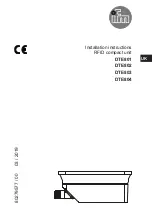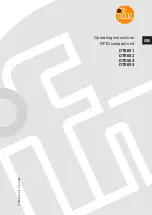
In TMR systems, it is generally desirable to maintain separate R, S, and T power systems throughout the control. When used
this way, JPDS will have three power supply inputs. The barrier terminal at the top and bottom of the board will not be used
to connect the three separate supplies. In dual systems, it is common to use dual redundant power supplies for 28 V power,
and to connect the positive side of the P28 R, S, and possibly T buses using jumpers applied to one of the barrier terminal
strips. It is also possible to use three supplies tied together into a single supply bus if desired.
Because JPDS does not have any output circuit fusing, it depends on the current limit of the power supplies to limit fault
current on outputs. If two power supplies of 500 W or greater are used in a diode or configuration, there will be too much
available fault current so the JPDM board with fusing must be used.
10.8.3.1
PPDA Configuration with JPDS
If one or two of the 28 V circuits are not powered, the undervoltage detection for that circuit can be disabled by changing the
value of
PS28vEnable
from
Enable
to
Disable
. This also removes the alarm driven by the power supply dry contact monitor
associated with that circuit.
Note
If the Dry Contact status feedback from the Power supply are not used, the
PS28vEnable
can be set to
NoDryCnt
to
continue to allow the 28 V input to be used, but disable diagnostic alarms driven by the power supply dry contact monitor.
10.8.4
JPDS Installation
JPDS mounts in a metal holder, which fits on a vertical DIN-rail next to other power distribution boards. Optionally, JPDS is
also available with a metal holder designed for direct mounting. Refer to the wiring diagrams for power input and output
routing. There is a 50-pin diagnostic connector mounted on the top and bottom of the board.
PDM Power Distribution Modules
GEH-6855_Vol_II System Guide 391
Public Information
















































